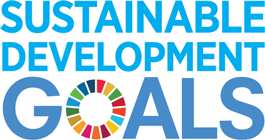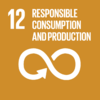Scaling up the shift towards circular production in fashion and beyond
Exploring ways to scale the adoption of new business models and fast-track innovation and collaboration at the circular production level - in the fashion industry and beyond.
Summary of Discussion
Q6. How can an actor like C&A Foundation, and its strategic partner Fashion for Good, drive more positive change?
- More efforts in specific regions
- Partnerships and collaborations e.g. Textile Exchange encouraging acion under SDG 12 and 17
- Engage all actors with a focus on consumers
- Fostering a sharing community - companies should share their learnings on how to change behaviours e.g. SDG Compass, sharing best practice principles
- Strong leadership support for circularity
- More brand partners
- Greater messaging with accurate information
- Consumer education
Q5. Which actors in the fashion industry do we need to involve in this transition to circular?
- Media - succesful advocacy for circularity from Elle UK (sustainable fashion edition)
- Financial community - seed funding
- Alterntive sectors (e.g. automotive, carpet, insulation, paper etc.) can be leveraged as solutions
- Everyone - we need an all-inclusive movement!
- Government to incentivise circular practices
- Us, as consumers - responsibility must be shared
- Textile producers
- Advocates such as Greenpeace
- Board of directors
- Education providers (schools, universities, colleges etc.) with a focus on fashion innovation
- Retailers can impact change throughout the supply chain
Q4. What can we learn from other industries when it comes to adopting these types of circular models?
- Plastics industry (EMP Plastics Economy Report) – willingness to develop solutions together
Consider the entire cycle for products e.g. electronic recycling industry
Recycled paper/plastic have the ability to be used several times throughout their lifetime
Retail industries – IKEA build circularity into their product design
Plastic industry – P&G’s beach plastic bottle integrates beach plastic to an existing supply chain
Tech industry for textile development but also helps with transparency
Luxury fashion industry continuing to contribute high quality, durable, and repairable pieces
- Change in narrative - companies need to make the switch to value over profits
- B2B may work better to adopt circular models - both sides consider profit, greater access, visibility
- Lobbying - don't underestimate the value of passionate individuals/groups
Q3. What changes are now needed to overcome these barriers in the industry? How can we make solutions happen?
- C-suite leadership involvement is crucial for change
- Collaboration - putting circularity theory into action
- Pre-competitive platforms e.g. Fashion for Good, allow collaboration between different actors
- Communicate the value of materials so consumers understand
- Whole system overhaul and ambition in integrating circularity into the business model
- Consumer awareness campaigns to address deficiency in knowledge
- Government support to provide brand and manufacturing incentives
- Technological innovation
- Research in support of the circularity
- Cross-sector collaborations
- Incentives for development
Q2. What are the barriers to adopting circular product design and / or manufacturing processes in the fashion industry?
- Limited understanding of what ‘circular’ means – this includes durability and repairability over the lifetime of clothing
- Designs are driven by trends and therefore lack sustainable credentials
- Tools which are used to measure sustainable materials e.g. SAC’s Higg Index, are not used at scale
- Collaborative efforts - no one sector is responsible; industries must work together
- Support for technology
- Lack of consumer demand – need a focus on design and production as opposed to just recycling
- Lack of urgency
- Developed societies undervalue materials and goods
- Limited business incentives for circular initiatives
- Allocation of risk and accountabiity - suppliers need to be involved in the process
- Customer behaviour - the consumer needs to be accountable for their shopping habits
- Education and incentives!
Best examples of circular models of product design and / or manufacturing processes in fashion recently?
- Automotive has potential but the barrier is cost
- Jeanologia – reducing water consumption and waste management
- Infrastructure is crucial – leaders include Kering, Nike, Patagonia, Eileen Fisher, Thread International, H&M, Aquafil
- Impacts must be analysed and these programs must be supported to bring about actual change
- Circularity has to receive buy-in from top companies
Q1. Fashion industry – leader or laggard in circular models for product design/manufacturing processes
Laggard
- Room for improvement – laggard might be too strong. Challenge is the structural nature of the industry.
- Fashion industry is old-fashion – slow to examine and change its own structures and embrace new ways of doing things e.g. wasteful, unsustainable
- Pace of change has increased over the last 10 years due to government, industry initiatives, academic research etc.
- Slow but steady progress to circularity – big stakeholders who are striving and supporting this model
- Only a few product design leaders within the fashion design industry – get away from ‘lighthouse’ approach (one circular) and help brands transform their business model
- No industry is truly leading in circular economy today
- Definition of circularity is stil being defined - therefore the process is leading and lagging
Meet our Special Guests
Centre for Sustainable Fash…
EILEEN FISHER
C&A
GlobeScan
C&A Foundation
Tyton BioSciences
Textile Exchange
Patagonia
Global Fashion Agenda
TerraCycle Inc.
Session Moderator
Paris, France




Posts
Back to Top